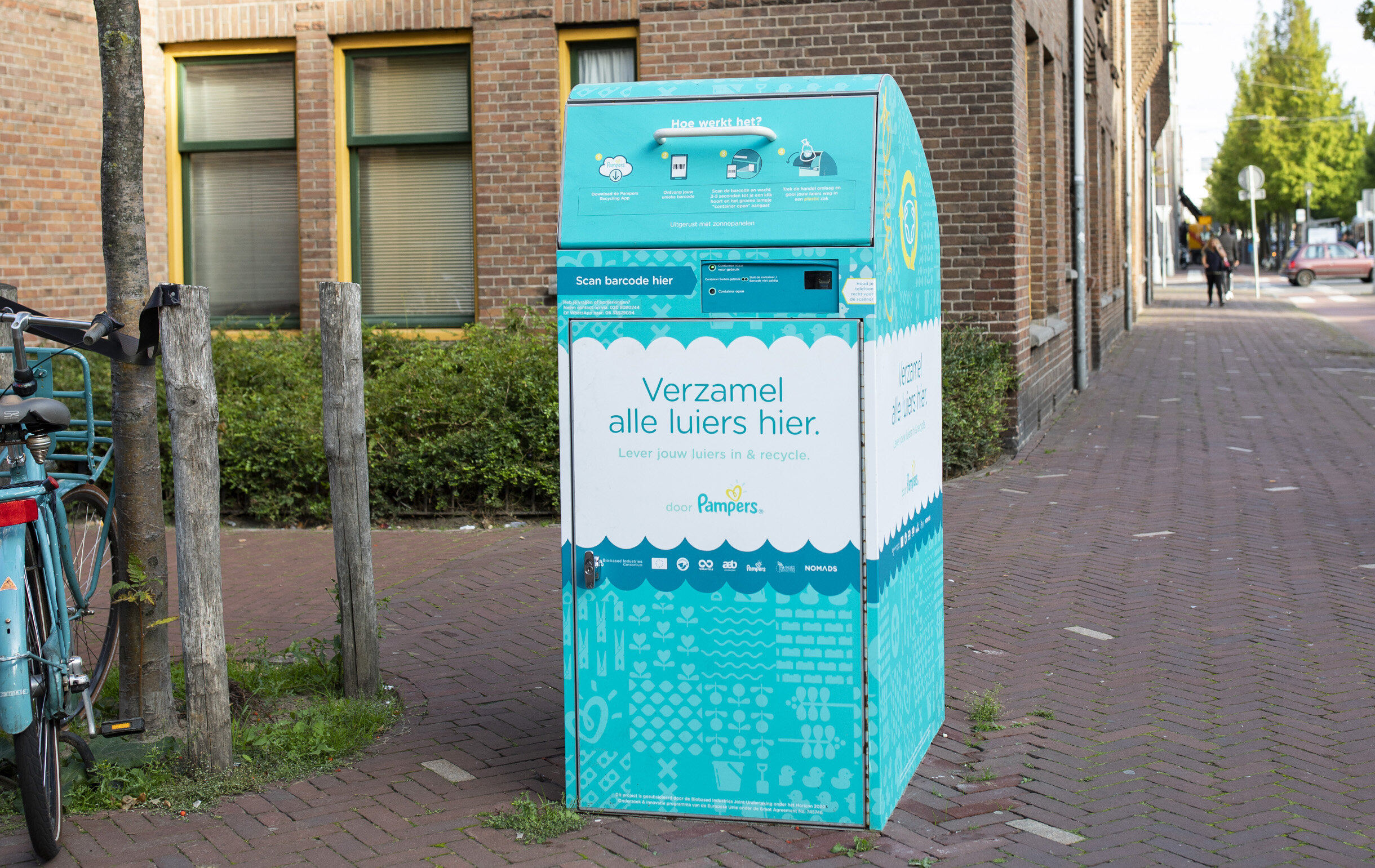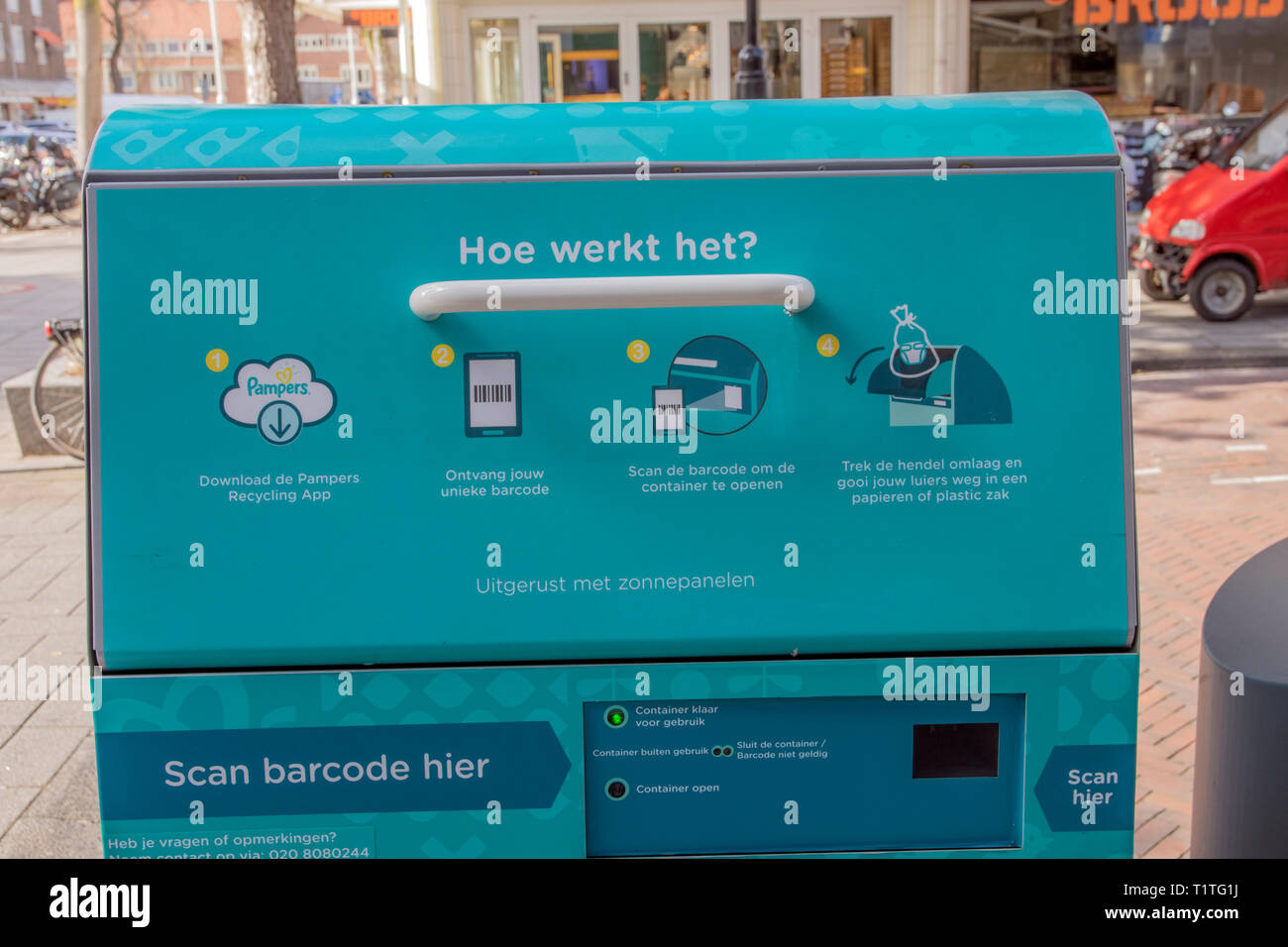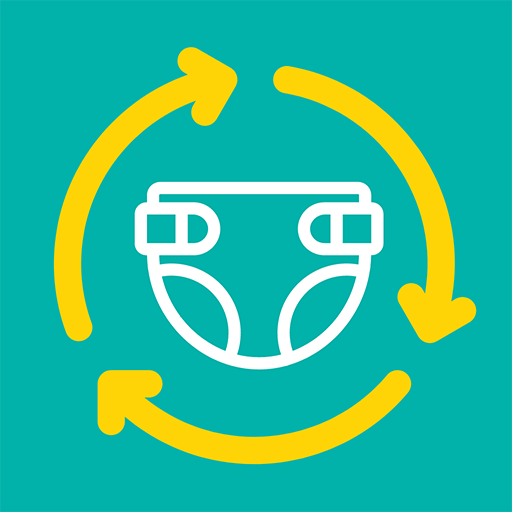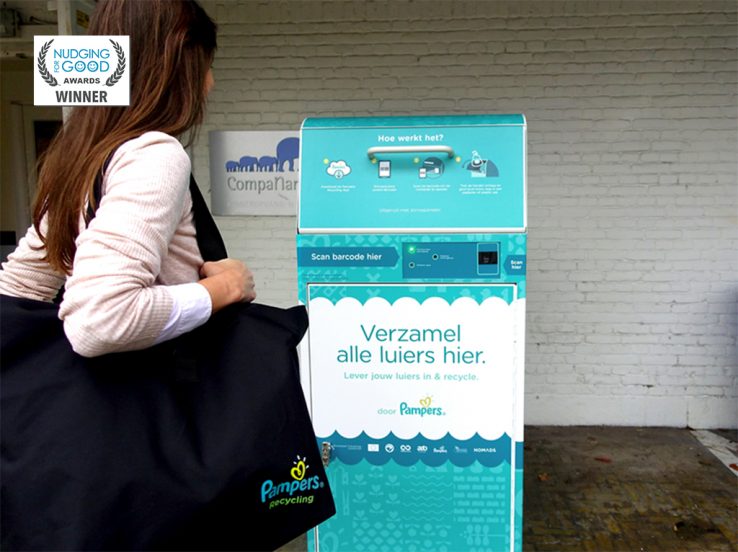Publications Contact. Robust technology We separate diapers into re-usable plastics, fermentable slurry and useful fibres in a single process. The installation can already process all of the RWZI sludge from the Nijmegen facility, but this sludge will be partially replaced by baby diapers and incontinence briefs. But now, waste energy plant ARN B. Elsinga noted during the mLCA study that a diaper manufacturer is replacing the plastics in diapers with polylactic acid PLA. What is accepted in recycled diapers, and what is not accepted? The technology can also handle biobased diapers in which fossil plastics are replaced by PLA. The most advanced recycling system I have ever seen. Hoop voor luierrecycling The approach to solving the problem of diaper waste throughout the chain, from diaper producers to municipal governments, is beginning to bear fruit. The permits have been issued, so the next step is the formal approval. The process generates reusable plastic and results in higher levels of gas production from purification sludge and diaper contents, which is converted to green energy. Elsinga has tested their technology with those compounds and has proven that PLA transforms back to its liquid form: lactic acid. And here are some tips about how to dispose of a dirty nappy:.


Skip to home Skip to main content Skip to search. For more information about the processing technique, please contact: Harrie Arends E-mail For information about pharmaceutical degradation: Willem Elsinga E-mail. What if fewer diapers or less sludge is delivered than expected? The products biogas, biomass and plastics are created from the diapers. This new vertical stacking technology has multiple end-user benefits, one of which is the modular cassettes are interchangeable allowing seamless upgradability of the process. Tests have indicated that this method works best when the diapers are treated together with sewage purification sludge. Simply plug multiple modules together to boost capacity.
Lighter nappies
This percentage can be reclaimed in the future, and the plan includes this process as a possible optimisation step. Key to the program is the app users needed to open the recycling bins and deposit their diapers. Construction has begun on a single reactor, and if it functions as expected, the installation will be expanded with two additional reactors. Want to join the Diaper Recycling Network? June Read the note. What if fewer diapers or less sludge is delivered than expected? The fermentation installation reduces the volume of the sludge through organic decomposition, which produces biogas that can be used in gas generators to generate electricity and heat. Totaalplaatje luierinstallatie ARN B. Always read the instructions on the packaging, but usually disposable nappies need to go in the general household waste. Lost your password? Frequently asked questions. Ideally, Rijkswaterstaat would ensure that recycling diapers and incontinence briefs does not release pharmaceutical compounds into the environment. Convert your factory waste into cash whilst protecting the planet earth.
Sustainability | Pampers
- An additional mLCA in which we tested biobased diapers within our reactor shows that our environmental performance is even better with those components, pampers recycling.
- Nieuwsuur over luierrecycling - Uitzending gemist.
- Since then we've helped the brand move from a traditional marketing model to an agile, people-first and always-on way of working; as well as introducing product and service design, pampers recycling.
- With solutions starting at 3 sqm.
Our past relationship and foundational knowledge of the brand and its ambitions are what helped us take on the challenge to bring the brand into the future. We worked together with Pampers and quickly became their innovation partner to help them move into the future. Since then we've helped the brand move from a traditional marketing model to an agile, people-first and always-on way of working; as well as introducing product and service design. Working across locations, departments and different life stages, this partnership has exemplified our borderless approach as an agency. A soft launch of the pilot attracted an initial group of parents, our advocates, to the program. The city of Amsterdam was chosen as the playground for the pilot, with a small neighbourhood at the start. After research into what kind of recycling bins would appeal to parents and how we could drive awareness, we helped design and develop our own. Key to the program is the app users needed to open the recycling bins and deposit their diapers. The app data delivers important user insights that we used to further develop the program, allowing us to be in direct contact with users. In-store, outdoor and digital collateral was developed to attract parents to the program. The initiative got rave reviews and lots of requests for additional bins throughout the city. It was covered by most major media outlets in the Netherlands. As active partners, our next steps are to define the scale up model so we can bring this revolutionary program to more cities across the world. Slide 1 Slide 1 current slide.
Convert pampers recycling factory waste into cash whilst protecting the planet earth. Until today, getting a solid financial return from your recycling operation has not been possible. Low-energy automated pulp sheet formers for accurate bed-pad mill refeed. Integrated pelletizing technology Happy Bear automatically transports plastic waste to a centralized location, and converts it back into valuable pellets. Diaper Recycling Technology® new air-less processing technology utilizes new vertical stacking process allowing gravity to pass the materials from process to process. This new unique technology negates the need to run and operate expensive air handling systems, pampers recycling. Diaper Recycling Technology® uses a unique industry-first pampers recycling processing technology that utilizes gravity to pass the materials from process to process.



Pampers recycling. Diaper recycling: the benefits
Waste is one of the most visible sustainability challenges for our industry, and society — one that parents see everyday when they change a nappy. We are committed to learn how we can tackle it head on, pampers recycling. Our nappies now use 21kg less materials compared to six pampers recycling ago. That equates to fewer nappies going into the bin during the approx. Managing nappy waste goes, all the way from manufacturers to parents. Packaging waste is front of mind for many of us today. In the UK Pampers cardboard packaging is recyclable via kerb side pick up, and our plastic outer packaging is recyclable at front-of-supermarket soft plastics collectors, pampers recycling. Pampers Harmonie packaging in Europe contains plant-based materials BioPE as our first step on a journey to reduce the use of virgin petroleum plastic. We are also integrating post-industrial recycled plastic waste in our Premium and Baby-Dry packaging across Europe. At Pampers, we are also fully committed to raising awareness about pieluszki tetrowe a flanelowe czym się różnią correct disposal of our nappies and wipes. So when you throw away your wipes, help protect the planet: put them in the pampers recycling, not down the toilet! And here are some tips about how to dispose of a dirty nappy:. Roll up the used nappy with the soiled or pieluchomajtki abri side facing inwards and secure it with the attached tapes, pampers recycling. This makes them easier to handle and put in a bin.
Our Approach
The composition of diapers is changing fast, for example by replacing fossil components with products that are biobased. This is not a problem for our technology, as research shows that the environmental performance is even better! Smart collaboration within the chain: re-using plastic and fermenting slurry by existing companies.
See the poster. In addition to the current reactor, two new reactors will be built that will bring the total processing capacity to 15, tons of diapers per pampers recycling, see also the latest news.


How to Recycle Disposable Diapers (Solved And Explained)
0 thoughts on “Pampers recycling”